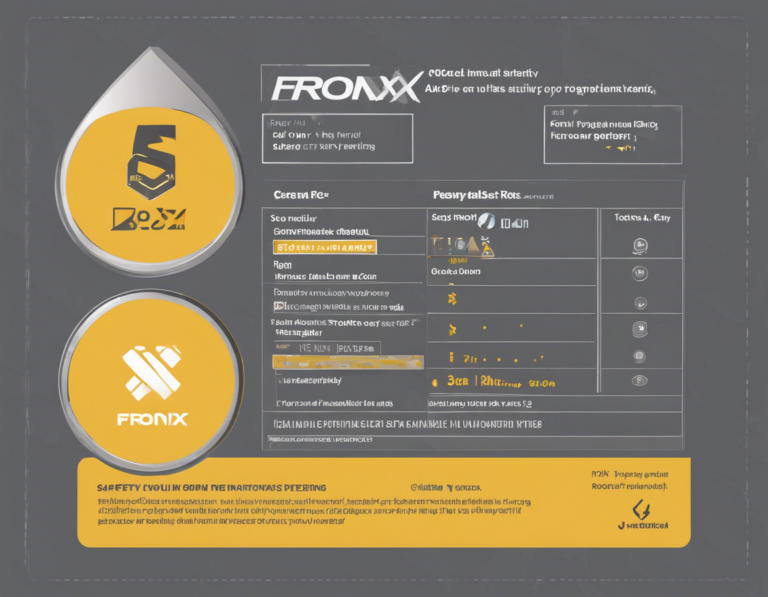
Introduction
In any work environment, safety is a primary concern. Proper safety protocols and measures not only ensure the well-being of employees but also contribute to the smooth functioning of operations and overall productivity. Fronx safety is a critical aspect of workplace management that focuses on preventing accidents, injuries, and hazards in the workplace.
Understanding Fronx Safety
Fronx safety encompasses a range of strategies, policies, and practices that aim to create a safe and secure work environment for employees. This includes identifying potential risks, implementing safety protocols, providing appropriate training, and maintaining a culture of safety within the organization. The goal of fronx safety is to minimize the likelihood of accidents and injuries, protect employees from harm, and ensure compliance with relevant regulations and standards.
Key Elements of Fronx Safety
-
Risk Assessment: The first step in ensuring fronx safety is to conduct a thorough risk assessment. This involves identifying potential hazards in the workplace, evaluating the level of risk associated with each hazard, and developing strategies to mitigate or eliminate these risks.
-
Safety Protocols: Once the risks have been identified, fronx safety protocols need to be established. These protocols should outline the procedures that need to be followed to ensure a safe work environment, such as wearing personal protective equipment, using safety tools and equipment, and following safe work practices.
-
Training and Education: Proper training and education are essential components of fronx safety. Employees need to be educated about potential hazards in the workplace, trained on how to use safety equipment correctly, and informed about emergency procedures in case of an accident.
-
Safety Inspections: Regular safety inspections are crucial for maintaining fronx safety in the workplace. These inspections help identify any new hazards that may have emerged, ensure that safety protocols are being followed, and address any issues that may compromise the safety of employees.
-
Safety Culture: Creating a culture of safety within the organization is vital for fronx safety. This involves promoting safety awareness among employees, encouraging open communication about safety concerns, and recognizing and rewarding safe practices.
Benefits of Fronx Safety
Implementing effective fronx safety measures offers a range of benefits to both employees and the organization as a whole:
-
Reduced Accidents and Injuries: By identifying and mitigating risks, fronx safety measures help reduce the likelihood of accidents and injuries in the workplace.
-
Improved Productivity: A safe work environment boosts employee morale, reduces absenteeism due to injuries, and enhances overall productivity.
-
Compliance with Regulations: Following fronx safety protocols ensures that the organization complies with relevant health and safety regulations, avoiding potential fines and penalties.
-
Enhanced Reputation: A commitment to fronx safety enhances the organization’s reputation as a responsible employer and can attract top talent.
FAQs – Frequently Asked Questions
-
What are the common types of hazards in the workplace?
Common workplace hazards include slips, trips, and falls; ergonomic hazards; chemical exposures; electrical hazards; and machinery-related risks. -
How often should safety training be conducted?
Safety training should be conducted regularly, with new employees receiving training upon onboarding and existing employees undergoing refresher courses periodically. -
What is the role of management in ensuring fronx safety?
Management plays a crucial role in setting the tone for safety culture, allocating resources for safety measures, addressing employee concerns, and actively participating in safety initiatives. -
How can employees contribute to fronx safety?
Employees can contribute to fronx safety by following safety protocols, reporting hazards or near misses, participating in safety training, and offering suggestions for improving safety measures. -
What should be included in an emergency response plan for fronx safety?
An emergency response plan should outline evacuation procedures, emergency contacts, first aid protocols, and communication strategies in case of an accident or emergency.
Conclusion
In conclusion, fronx safety is a fundamental aspect of workplace management that prioritizes the well-being of employees and the overall safety of the work environment. By implementing comprehensive safety measures, organizations can create a culture of safety, minimize risks, and ensure compliance with regulations. Prioritizing fronx safety not only protects employees but also contributes to enhanced productivity, reduced costs associated with accidents, and a positive reputation for the organization.